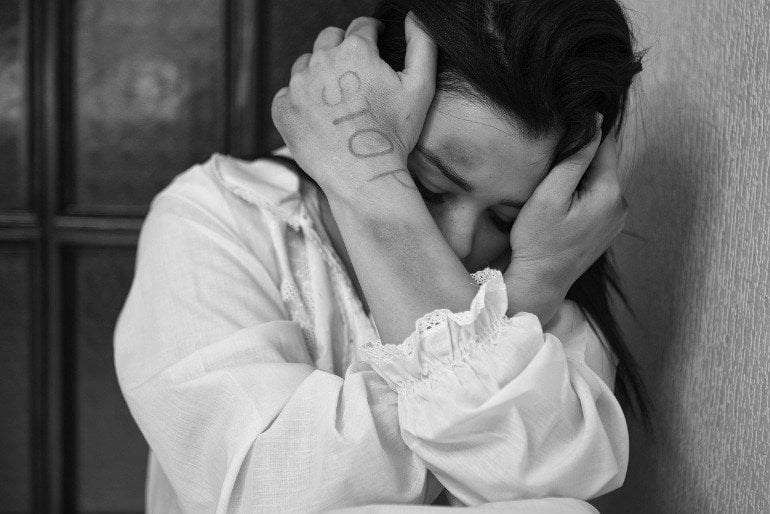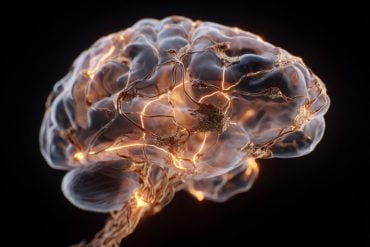Summary: 78% of female prisoners had a history of severe head injury, most of which occurred in the context of domestic violence. 66% of prisoners experienced repeated head injuries spanning several years.
Source: University of Glasgow
New research has found that 78% of women prisoners in Scotland have a history of significant head injury – most of which occurred in the context of domestic abuse that often lasted over periods of several years.
The University of Glasgow-led study – funded by the Scottish Government and published today in the Lancet Psychiatry – also found 66% of women prisoners had suffered repeat head injuries for many years. The majority of the study participants were from the most deprived population quintile.
Domestic violence was the most common cause of repeat head injury in the women surveyed, reported by 89% of the participants who also reported repeat head injuries. Only five women had experienced a single incident moderate-severe head injury, without multiple, mild head injuries in addition. Of those with a history of significant head injury, a first head injury before the age of 15 was reported by 69% of women.
For the study, researchers interviewed around a quarter of women in Scottish prisons, 109 women in total, between 2018 and 2019. The women were assessed for a history of head injury, including its causes, a history of abuse, as well as for disability and mental and physical health conditions. The study included participants from four Scottish prisons: HMP Cornton Vale, Greenock, Lothian and Polmont.
Of the 78% of women prisoners who had a history of significant head injury, 40% of those who participated in the study also had an associated disability. Previous research has reported that many women in prison have a history of head injury, but none looked at disability.
Researchers also found that violent criminal behaviour was three times more likely in those with a history of significant head injury, and that women with a significant head injury had spent three times longer in prison.
.
Almost all participants in the study, 95%, reported a history of abuse, with more than half reporting sexual abuse in childhood and 46% reporting sexual abuse in adulthood. Physical abuse in childhood was reported by 39%, while 81% of participants reported physical abuse in adulthood.
A history of alcohol or drug misuse was common, with substantially higher rates in the group who reported significant head injuries. Almost all, 92%, complained of mental health difficulties, with anxiety and depression the most commonly reported. Although the average years of education for participants was 12, schooling was often disrupted by exclusion or truanting and many required special schooling or support.
Professor Tom McMillan, Professor of Clinical Neuropsychology at the University of Glasgow and lead author of the study, said: “It is already recognised that women in prison are vulnerable because of histories of abuse and substance misuse. However, this research shows that a history of significant head injury is also a vulnerability and needs to be included when considering mental health needs and in developing criminal justice policy given the relationships with associated disabilities, abuse and violent crime’’.
“Our findings suggest that interventions to reduce mental health morbidity, and assessment and management of risk of violent offending should include history of significant head injury. There is a need to recognise these vulnerabilities at an early stage, including at the first contact with the criminal justice system, to assess these women and provide long term support.”

Common persisting effects of significant head injury include impairments in information processing and emotional changes associated with impulsivity, irritability and egocentricity. These effects can impair judgement and self-control, and as a result increase risk of offending. Significant head injury can also impair the maturation of the developing brain if occurring before adulthood.
The characteristics of significant head injury in women in prison differ from women with significant head injury in the general population. Domestic violence was the most common cause of these injuries in women in prison, whereas falls are most common in the general population. In addition head injury occurred repeatedly in around two-thirds of women in prison with significant head injury, whereas single incident head injury from an accident is more common in the general population.
At the time the study took place the total number of women in Scottish prisons was around 400, and there were 355 women in the prisons the researchers recruited participants from. All the women prisoners who took part were aged over 16 years.
About this TBI research news
Source: University of Glasgow
Contact: Ali Howard – University of Glasgow
Image: The image is in the public domain
Original Research: Open access.
“Associations between significant head injury and persisting disability and violent crime in women in prison in Scotland, UK: a cross-sectional study” by Tom McMillan et al. Lancet Psychiatry
Abstract
Associations between significant head injury and persisting disability and violent crime in women in prison in Scotland, UK: a cross-sectional study
Background
The prevalence of head injury is estimated to be as high as 55% in women in prison and might be a risk factor for violent offending, but evidence is equivocal. The extent of persisting disability is unknown, making decisions about service needs difficult. The UN recognises vulnerabilities in women in prison, but does not include head injury. This study aimed to investigate relationships among head injury, comorbidities, disability, and offending in women in prison.
Methods
In this cross-sectional study, women were recruited between Feb 2, 2018, and Sept 30, 2019, from four prisons across Scotland, UK: Her Majesty’s Prison (HMP) Cornton Vale, Her Majesty’s Young Offenders Institute Polmont, HMP Edinburgh, and HMP Greenock (detaining approximately 355 individuals at the time of recruitment). Women were included if they were aged older than 16 years, fluent in English, able to participate in face-to-face assessment and provide informed consent, and did not have a severe acute disorder of cognition or communication. Head injury, cognition, disability, mental health, and history of abuse and problematic substance use were assessed by interview. History of head injury was assessed with the Ohio State University Traumatic Brain Injury Identification method and disability was assessed with the Glasgow Outcome at Discharge Scale. Comparisons were made between women with and without a history of significant head injury.
Findings
We recruited 109 (31%) of the 355 women in these prisons. The sample was demographically representative of the approximately 400 individuals in women’s prisons in Scotland. Significant head injury (SHI) was found in 85 (78%) of 109 women, of whom 34 (40%) had associated disability. Repeat head injury was reported in 71 (84%) of the 85 women with SHI and, in most cases, this resulted from domestic abuse that had occurred over many years. Women with a history of SHI were significantly more likely to have a history of violent offences than those without a history of SHI (66 [79%] of 85 women in the SHI group vs 13 [54%] of 24 women in the no-SHI group had committed a violent offence; odds ratio [OR] 3·1, 95% CI 1·2–8·1). This effect remained significant after adjusting for current factors (3·1, 1·1–9·0), including comorbidities associated with post-traumatic stress disorder, and was no longer statistically significant after adjusting for historical factors (3·3, 1·0–10·9), such as abuse as a child or adult. Women with SHI had spent longer in prison than women without SHI after adjustment for current (rate ratio 3·4, 1·3–8·4) or historical (3·5, 1·3–9·2) risk factors.
Interpretation
It is recognised that women in prison are vulnerable because of histories of abuse and problematic substance use; however, history of SHI needs to be included when developing criminal justice policy, interventions to reduce mental health morbidity, and assessment and management of risk of violent offending.
Funding
The Scottish Government.






